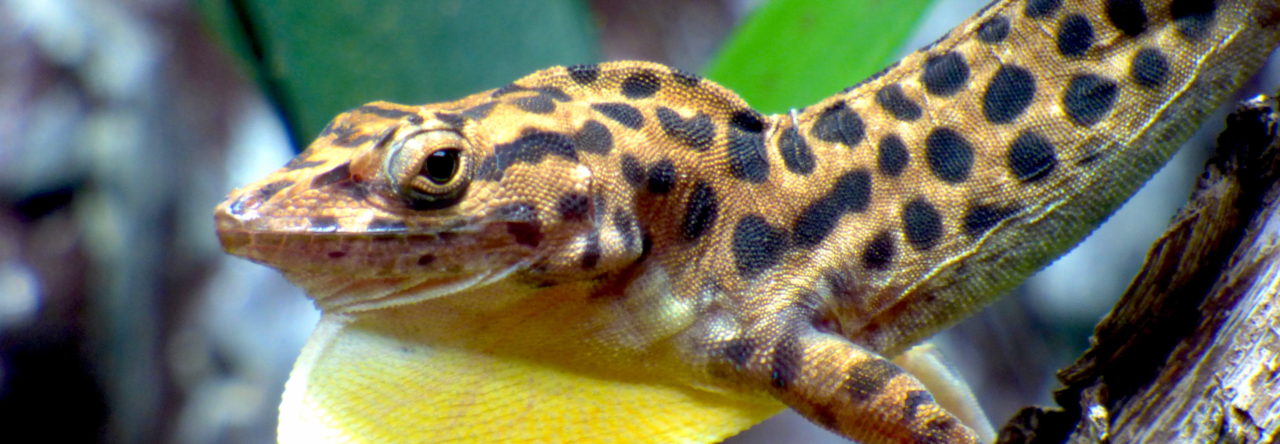There was some talk a while back about the fabled gray-dewlapped anole of Florida (and, according to the comments, elsewhere). Amidst this discussion, one commenter referred to it as Anolis carolinensis seminolus. Many of us, even experienced anole hands, were unaware that A. carolinensis had subspecies. After a little bit of poking around, we’ve discovered the answer. Indeed, there are described subspecies. Thomas Vance, in a paper in the Bulletin of the Maryland Herpetological Society in 1991 described the gray-dewlapped form as A. c. seminolus, relegating the rest of the species to A. c. carolinensis. The paper, which can be downloaded here, is not as overwhelming as its 47-page length might imply. There’s a nice discussion of the history of the species name A. carolinensis (turns out that it’s quite a confusing trail of names), followed by a detailed comparison of morphological variation, focusing primarily on scale characters and based on the examination of nearly a thousand specimens. There’s a lot of molecular phylogeographic work on carolinensis in the works right now, and it’ll be interesting to see how the genetic data square with Vance’s taxonomy (my guess: not so well). More generally, it’s surprising how little work on variation in this species has been conducted. For anyone interested in this fascinating and underappreciated lizard, this paper is worth a look.
- Evolution in Real Time on Lizard Island - March 23, 2025
- Spider Snags Adult Anolis osa - March 22, 2025
- An Homage to the Green Anoles of New Orleans - March 21, 2025



Skip Lazell
The Mississippi Gulf Coast islands like Horn & Petite Bois have strikingly distinct A. carolinensis too. It would take a huge amount of work to see how far east that color form goes and compare it extensively enough to the mainland form(s) to arrive at taxonomic conclusions. I contemplated it decades ago, but had already done my Ph. D. dissertation….
Steven A. Nole
Isn’t A. carolinensis itself an unrecognized subspecies of A. porcatus (A. porcatus carolinensis)?
Seems the ones described here should be considered a subspecies of a subspecies.